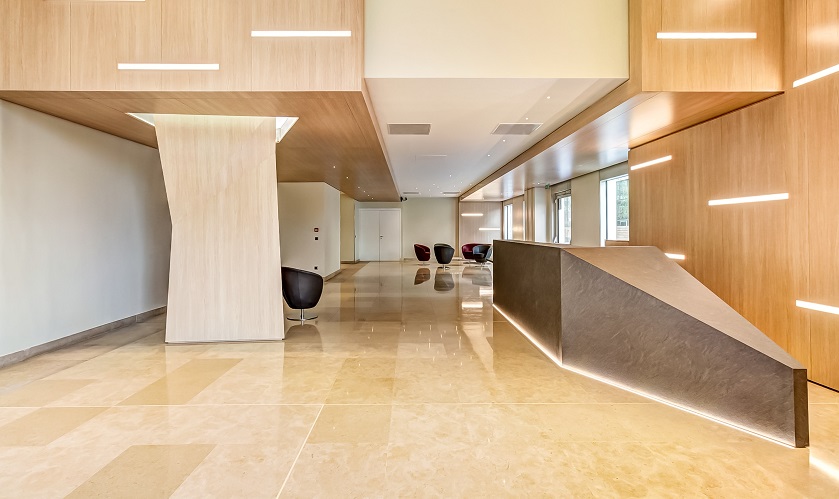Managing your workspace efficiently is crucial for success in the modern workplace. The growing demand for hybrid work and flexible schedules has resulted in many organizations moving towards a hot-desking environment where flexibility and adaptability are at a premium. With such a dynamic workplace, managing it will become a challenge if there are no proper tools. Businesses need to have an organized and efficient system in place to help in managing the new workplace.
This is where workspace management software comes in. It is a powerful tool that streamlines all aspects of workspaces, from desk booking to resource allocation.
According to a report by MarketsandMarkets, the global workspace management market is expected to reach $9.89 billion by 2023, growing at a Compound Annual Growth Rate (CAGR) of 14.4%. The report attributes this growth to the rising demand for smart office solutions, the increasing adoption of IoT, and the need for cost optimization.
Another report by Cushman & Wakefield found that companies that implement workspace management software can save up to 30% of their real estate costs. These statistics demonstrate the significant impact that workspace management software can have on a business’s bottom line.
In this article, we will explore the key benefits of using workspace management software and why it is a must-have for every business, regardless of its size or industry.
So, whether you are a small start-up or a large corporation, read on to find out how this software can revolutionize your workspace management practices and take your business to the next level.
What is Workspace Management?
In most organizations, people and space are two of the biggest investments. To make the most of these investments, you need people to get together in suitable spaces as efficiently and effectively as possible, in a safe manner with all the required tools. In short, this is workspace management.
For instance, if you have limited space for 100 employees, workspace management entails studying what the best arrangement so that everyone has their own workspace. Also, you need to ensure that each desk has enough light, an outlet for a computer, and that there is an air conditioning system.
Workspace management includes everything from space planning and design to equipment management and building maintenance. Not only does it improve your office space, but workspace management also enhances your workers’ experience. To make it easier for you to understand what we are talking about, here are a few examples:
- managing the physical workspace;
- ensuring a frictionless workflow;
- matching workers’ expectations;
- encouraging collaboration;
- focusing on employee well-being;
- spotting facilities issues;
- creating more sustainable solutions;
- implementing modern technology; etc.
The goal is to create a work environment in which your employees have everything they require to perform their job to the best of their abilities. They must also feel they belong to their workspace. To make that happen, you can decide to adopt a flexible work policy, use a workspace management software (also known as a desk booking software), or set up areas for people to chill and switch off when needed.
Challenges of managing the office without the workspace management software
Managing the office without the support of workspace management software poses significant challenges that affect the overall functioning of the office.
The absence of the software leads to chaotic employee movement within the hybrid office. Employees shift from one workspace to another in an unorganized manner, resulting in confusion and inefficiency. This can lead to increased frustration and dissatisfaction among employees, as they struggle to find available workspaces.
Also, without a centralized system to monitor space utilization, it becomes challenging to identify which areas are in high demand and which ones are underutilized. This lack of visibility hinders the ability to optimize space usage.
Moreover, the absence of workspace management software makes it difficult to maintain a clear record of seating arrangements. Employees and managers alike find it challenging to keep track of who is sitting where, making it difficult for employees to collaborate.
Strategic planning for future space requirements becomes a guessing game without the data-driven insights provided by workspace management software, which generates valuable analytics on space usage trends, helping management make informed decisions about potential expansions or layout changes. In the absence of this information, the management lacks the necessary tools to foresee and accommodate future spatial needs, which can lead to unnecessary costs.
Benefits of using workspace management software
The benefits of using workspace management software are aplenty.
Firstly, it saves time and improves productivity. With a centralized system, employees can quickly book desks, rooms, and resources without wasting any time. They can also see real-time availability, which reduces confusion and eliminates double bookings.
Secondly, it enhances the overall user experience. Employees can customize their workspace preferences, such as lighting and temperature, which improves their comfort and satisfaction.
Thirdly, it enables businesses to optimize their workspace usage. By tracking occupancy and usage patterns, businesses can identify underused or overused areas and make data-driven decisions to improve space utilization.
Finally, it promotes transparency and accountability. With a centralized system, managers can track usage, monitor costs, and generate reports, which facilitates better decision-making and budget planning for the office.
How workspace management software works
Workspace management software, like ecobook, is a cloud-based platform that enables businesses to manage their workspace efficiently. It typically includes features such as desk booking, room scheduling, resource allocation, visitor management, and analytics.
Users can access the platform through a web browser or a mobile app, which makes it convenient and accessible from anywhere. The software integrates with other tools such as calendar apps, messaging apps, and access control systems, which further improves its usefulness.
Key features of workspace management software
Workspace management software includes several key features that make it an essential tool for businesses.
Firstly, it enables desk booking, which allows employees to reserve a desk or workstation in advance. This feature reduces the time and effort required to find available desks, which improves productivity, especially in a hybrid setting.
Secondly, it offers room scheduling, which enables employees to book meeting rooms, conference rooms, and other spaces. This feature ensures that employees have access to the right space for their needs, which enhances collaboration and productivity.
Thirdly, it includes resource allocation, which enables businesses to manage their resources efficiently. This feature ensures that resources such as printers, projectors, and other equipment are available when needed, which reduces downtime and improves efficiency.
Finally, it includes analytics, which provides businesses with valuable insights into their workspace usage and occupancy patterns. This feature enables them to make data-driven decisions to optimize their workspace usage.
Implementing workspace management software in your organization
Implementing workspace management software requires careful planning and execution.
Firstly, businesses should communicate the benefits of the software to their employees and provide training and support to ensure a smooth transition.
You should also establish policies and procedures to govern the use of the software and ensure compliance. Additionally, they should monitor usage and performance to identify any issues and make necessary adjustments.
Training and support for workspace management software
Training and support are critical components of successful implementation and adoption.
Businesses should provide comprehensive training to their employees to ensure they understand how to use the software effectively. They should also make sure that the vendor is ready to provide ongoing support to address any issues that arise.
Finally, they should encourage feedback from their employees to identify areas for improvement and ensure continuous improvement.
Workspace management software integrations with other tools
Integration with other tools such as calendar apps, messaging apps, and access control systems improves the functionality of workspace management software.
By integrating with calendar apps, employees can easily book and schedule workspace resources, such as meeting rooms or desks, directly from their calendars, eliminating the need for separate booking systems.
Integration with messaging apps enables instant notifications and updates on workspace availability, ensuring quick and effective communication among team members.
Access control system integration allows for automated access to designated workspaces based on reservations, reducing administrative burdens and enhancing security.
Choosing the right workspace management software for your business
When choosing the software, businesses should consider several factors. Firstly, they should evaluate their current workspace management practices and identify areas for improvement.
They should also consider their budget and the features they need to meet their specific requirements.
A robust workspace management software like ecobook is easy to use, cost-effective, scalable and integrates well with other tools. Facilitiesbooking.com is a reputable vendor with a proven track record of delivering high-quality software and providing excellent customer support.
Conclusion
In conclusion, businesses will benefit tremendously from workspace management software. The system:
- Saves time
- Improves productivity
- Enhances the user experience
- Optimizes workspace usage
- Promotes transparency and accountability, and
- Saves costs
By choosing ecobook, implementing it effectively, providing basic training and support, and integrating it with other tools, organizations can revolutionize their workspace management practices and take their business to the next level.
Cheers!





